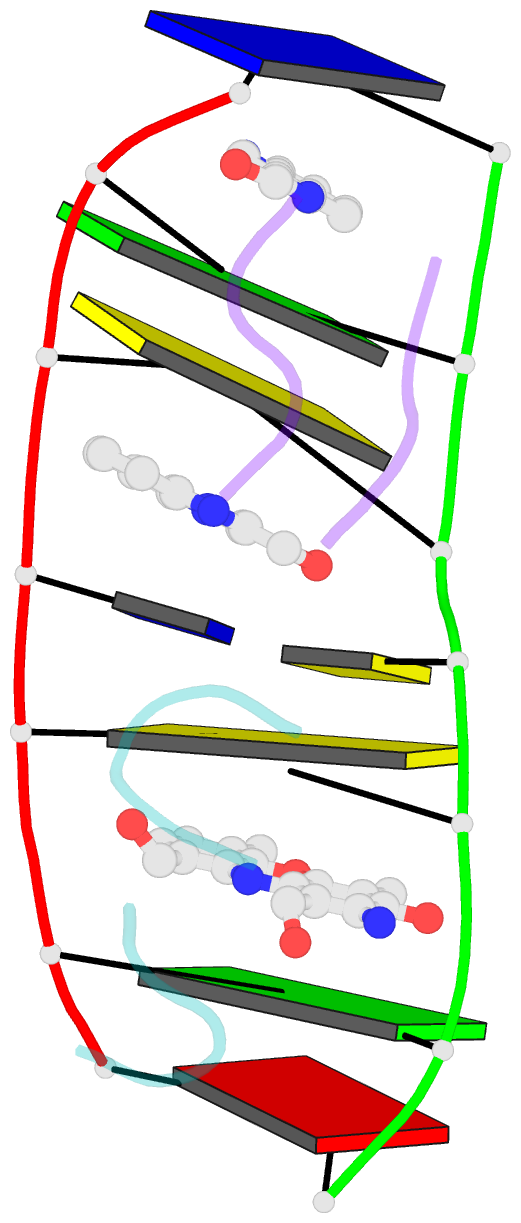Summary information and primary citation
- PDB-id
- 7dq8; SNAP-derived features in text and JSON formats;
DNAproDB
- Class
- antibiotic-DNA
- Method
- X-ray (2.4 Å)
- Summary
- Crystal structure of actinomycin d-echinomycin-d(acgcgct-agctcgt) complex
- Reference
- Satange R, Chang CC, Li LY, Lin SH, Neidle S, Hou MH (2023): "Synergistic binding of actinomycin D and echinomycin to DNA mismatch sites and their combined anti-tumour effects." Nucleic Acids Res. doi: 10.1093/nar/gkad156.
- Abstract
- Combination cancer chemotherapy is one of the most useful treatment methods to achieve a synergistic effect and reduce the toxicity of dosing with a single drug. Here, we use a combination of two well-established anticancer DNA intercalators, actinomycin D (ActD) and echinomycin (Echi), to screen their binding capabilities with DNA duplexes containing different mismatches embedded within Watson-Crick base-pairs. We have found that combining ActD and Echi preferentially stabilised thymine-related T:T mismatches. The enhanced stability of the DNA duplex-drug complexes is mainly due to the cooperative binding of the two drugs to the mismatch duplex, with many stacking interactions between the two different drug molecules. Since the repair of thymine-related mismatches is less efficient in mismatch repair (MMR)-deficient cancer cells, we have also demonstrated that the combination of ActD and Echi exhibits enhanced synergistic effects against MMR-deficient HCT116 cells and synergy is maintained in a MMR-related MLH1 gene knockdown in SW620 cells. We further accessed the clinical potential of the two-drug combination approach with a xenograft mouse model of a colorectal MMR-deficient cancer, which has resulted in a significant synergistic anti-tumour effect. The current study provides a novel approach for the development of combination chemotherapy for the treatment of cancers related to DNA-mismatches.





